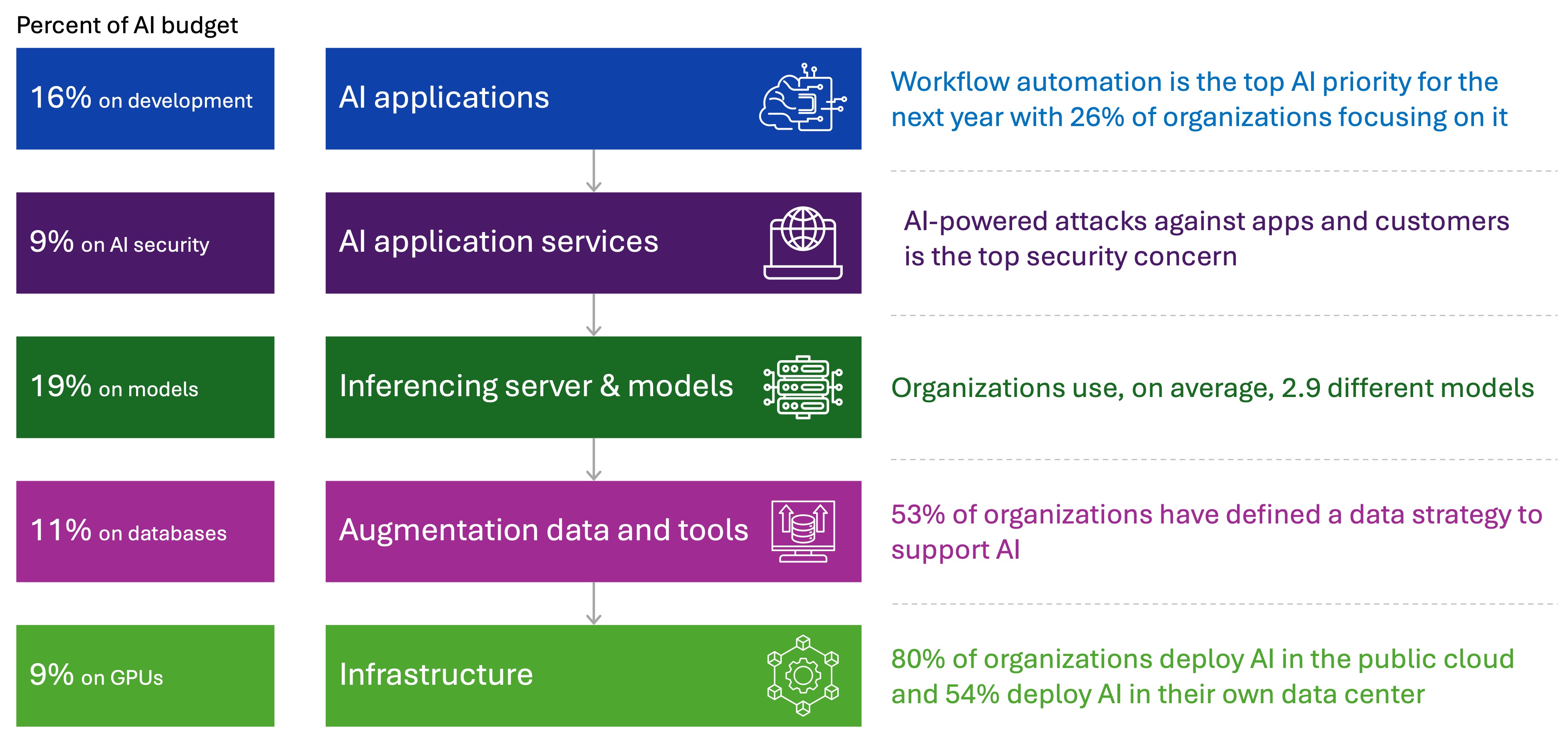État de la stratégie d'application de l'IA : Maturité ou folie numérique
Il se pourrait que l’IA mène à un peu des deux.
De nouvelles recherches sur l’IA arrivent chaque jour dans ma boîte de réception. Lorsqu’il ne s’agit pas d’un article technique sur une nouvelle technique d’amélioration des performances ou une nouvelle architecture, il s’agit d’une enquête sur les perceptions et les projets concernant l’IA dans la vie des consommateurs et des entreprises.
Nous nous sommes également lancés dans l’adoption de l’IA . Après avoir eu un avant-goût de ce qui nous attend dans notre recherche annuelle, nous avons effectué une analyse approfondie pour vraiment comprendre comment les organisations exploitent actuellement – et prévoient d'exploiter – la puissance de l'IA.
Nous n’avons pas été déçus du résultat. Mais nous n’avons pas été vraiment surpris non plus. Nous bénéficions de nos propres recherches et, comme mentionné, d'une boîte de réception remplie de statistiques et d'informations provenant de l'ensemble du secteur.
Mais nous avons découvert des détails qui racontent une histoire beaucoup plus solide sur l’adoption de l’IA en entreprise dans le monde d’aujourd’hui. Il n’y a pas que OpenAI, et ce n’est pas non plus seulement une question de productivité. En fait, lorsque vous examinez l’état de l’IA du point de vue de sa pile émergente, vous pouvez clairement voir que les organisations exécutent frénétiquement une grande variété d’initiatives qui, pour la plupart, soutiennent les utilisations futures de l’IA plus qu’elles n’apportent sa valeur aujourd’hui.

Par exemple, les cas d’utilisation de la productivité (les copilotes et les chatbots qui semblent être partout et dans tout) sont déjà largement mis en œuvre. Près de la moitié (40 %) des organisations ont adopté des outils de productivité des employés basés sur l'IA et un peu plus d'un tiers (36 %) ont déployé ces chatbots que vous aimez ou détestez, et parfois les deux en même temps.
Mais ces détails ne sont pas si intéressants. Ce qui est intéressant, c’est exactement quels modèles les organisations adoptent et, en fin de compte, pourquoi.
Les entreprises ne se limitent pas à un seul modèle. Elles utilisent en moyenne 2,9 modèles, selon les cas d’usage choisis. Vous constatez une adoption solide des modèles open source et propriétaires dans tous les secteurs. Des noms comme Llama et Mistral s’entendent aussi souvent que ChatGPT et Hugging Face.
Ce qui laisse présager une diversité encore plus grande l’année prochaine, lorsque les organisations mettront en œuvre leur principale priorité en matière d’IA, l’automatisation des flux de travail. Parce que ce cas d’utilisation ne convient pas parfaitement à l’IA en tant que service, étant donné sa nécessité d’être intégrée aux flux de travail d’une organisation. Il s’agit d’un terme technique désignant les processus commerciaux et opérationnels, qui ont largement constitué la base de l’avantage concurrentiel d’une entreprise depuis les débuts de l’informatique.
Ce qui est plus intéressant du point de vue d'un praticien ou d'un responsable informatique, c'est la pile technologique et la façon dont elle se constitue. Nous savons que les applications d’IA sont des applications modernes qui augmentent le nombre d’ API en jeu, mais à quoi ressemble la pile et où cette pile est-elle déployée ? Vous remarquerez peut-être que nous incluons les services d’application d’IA dans notre vision de la pile technologique d’IA. C’est parce que les préoccupations liées à la sécurité et à l’échelle vont renforcer le rôle déjà important que jouent les services d’application dans la fourniture et la sécurisation d’applications de toutes sortes.
Les inquiétudes abondent concernant les défenses contre les attaques alimentées par l’IA sur les API et les applications, concernant la protection de la vie privée des clients et des entreprises, ainsi que concernant la préservation des secrets d’entreprise. C'est pourquoi nous n'avons aucun doute sur le fait que les services d'application, qu'ils soient existants, comme la protection DDoS et la sécurité des API, l'équilibrage de charge et le contrôle des entrées , ou qu'ils soient émergents, comme les passerelles d'IA, seront des composants essentiels et essentiels de la pile technologique de l'IA.
Les organisations prévoient de consacrer 9 % de leur budget d’IA à ces services, en plus de toutes les autres dépenses qu’elles vont effectuer pour développer leur pile technologique d’IA.
Et elles le font, avec plus de la moitié (54 %) des organisations prévoyant de déployer des modèles et des applications d'IA sur site.
Maintenant, avec tout ce qui a été dit, il y a beaucoup de détails sur l’état de l’IA que je ne partage pas parce que, eh bien, nous avons déjà écrit un rapport complet sur les détails que vous pouvez obtenir dès maintenant, ici même .
Alors, plongez-vous et découvrez pourquoi nous sommes convaincus que la route vers l’IA mène soit à la folie numérique, soit à la maturité numérique .
